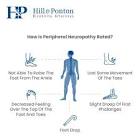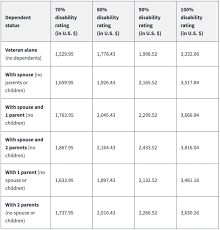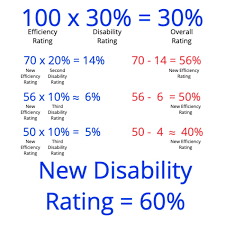Understanding VA Disability Secondary Conditions
When applying for VA disability benefits, it’s essential to understand the concept of secondary conditions. Secondary conditions are medical issues that arise as a result of a service-connected disability. These conditions may not be directly caused by the original disability but are related to it.
For example, a veteran with a service-connected back injury may develop secondary conditions such as depression due to chronic pain or limited mobility. In this case, the depression would be considered a secondary condition.
It’s crucial for veterans to document and report any secondary conditions to the VA when filing for disability benefits. Providing medical evidence linking the secondary condition to the service-connected disability is key to receiving compensation for these additional health issues.
The VA evaluates secondary conditions based on their relationship to the service-connected disability and how they impact the veteran’s overall health and well-being. Veterans should work closely with their healthcare providers to document and treat these secondary conditions effectively.
By understanding and advocating for recognition of secondary conditions, veterans can ensure they receive the full range of benefits they are entitled to under the VA disability system.
Understanding VA Disability Secondary Conditions: Frequently Asked Questions
- What are VA disability secondary conditions?
- How do secondary conditions relate to service-connected disabilities?
- What types of medical issues can be considered secondary conditions?
- Is it important to report secondary conditions when applying for VA disability benefits?
- How does the VA evaluate secondary conditions in relation to the original disability?
- What kind of evidence is needed to support a claim for a secondary condition?
- Can veterans receive compensation for both their primary and secondary conditions?
- Are there specific guidelines or criteria for determining if a condition is considered a secondary condition?
What are VA disability secondary conditions?
VA disability secondary conditions are additional medical issues that arise as a result of a service-connected disability. These secondary conditions may not be directly caused by the original disability but are related to it. For example, a veteran with a service-connected knee injury may develop secondary conditions like arthritis or gait abnormalities due to the initial injury. It is essential for veterans to understand and document these secondary conditions when applying for VA disability benefits, as they can impact the level of compensation received. By recognizing and addressing secondary conditions, veterans can ensure they receive comprehensive care and support through the VA disability system.
How do secondary conditions relate to service-connected disabilities?
Secondary conditions in relation to service-connected disabilities refer to medical issues that arise as a result of the original service-connected disability. These secondary conditions may not be directly caused by the primary disability but are linked to it in some way. For example, a veteran with a service-connected knee injury may develop arthritis in the same joint as a secondary condition. The VA considers the impact of these secondary conditions on the overall health and well-being of the veteran when determining disability compensation. It is important for veterans to understand how secondary conditions relate to their service-connected disabilities and to provide thorough documentation and evidence when filing for VA disability benefits.
What types of medical issues can be considered secondary conditions?
Various medical issues can be considered secondary conditions in relation to VA disability claims. These may include mental health conditions such as depression or anxiety stemming from a physical injury, as well as physical conditions that develop as a result of a service-connected disability, such as arthritis due to altered gait from a leg injury. It is essential for veterans to thoroughly document and report any secondary conditions to the VA when filing for disability benefits to ensure they receive appropriate compensation and care for these related health issues.
Is it important to report secondary conditions when applying for VA disability benefits?
When applying for VA disability benefits, it is crucial to report any secondary conditions that have arisen as a result of a service-connected disability. Documenting and reporting these secondary conditions is essential as they can impact the overall health and well-being of veterans. Providing evidence linking these secondary conditions to the original service-connected disability is key to ensuring that veterans receive the appropriate compensation and benefits they are entitled to under the VA disability system. Failure to report secondary conditions may result in missing out on necessary support and resources that could significantly improve the quality of life for veterans.
How does the VA evaluate secondary conditions in relation to the original disability?
When evaluating secondary conditions in relation to the original disability for VA disability benefits, the VA considers the medical evidence linking the two conditions. The VA assesses how the secondary condition is connected to the service-connected disability and how it impacts the overall health and well-being of the veteran. It is essential for veterans to provide detailed documentation and medical records that establish a clear relationship between the original disability and any secondary conditions. By demonstrating this connection, veterans can increase their chances of receiving compensation for these additional health issues through the VA disability system.
What kind of evidence is needed to support a claim for a secondary condition?
To support a claim for a secondary condition in a VA disability case, it is crucial to provide strong medical evidence linking the secondary condition to the service-connected disability. This evidence can include medical records, test results, doctor’s opinions, and statements from healthcare providers detailing the relationship between the primary and secondary conditions. Additionally, documenting how the secondary condition impacts daily life and overall health can strengthen the case for VA benefits. Gathering comprehensive and detailed evidence is essential to ensure a successful claim for a secondary condition under VA disability benefits.
Can veterans receive compensation for both their primary and secondary conditions?
Veterans can receive compensation for both their primary and secondary conditions through the VA disability system. Service-connected disabilities, whether primary or secondary, are eligible for compensation based on their impact on the veteran’s health and daily functioning. It is essential for veterans to provide thorough documentation and medical evidence linking their secondary conditions to the original service-connected disability when applying for benefits. By ensuring that both primary and secondary conditions are properly documented and evaluated, veterans can receive compensation that reflects the full scope of their service-related health issues.
Are there specific guidelines or criteria for determining if a condition is considered a secondary condition?
When determining if a condition is considered a secondary condition for VA disability purposes, specific guidelines and criteria exist to guide the evaluation process. The VA typically looks for medical evidence establishing a clear link between the secondary condition and the service-connected disability. Factors such as medical history, expert opinions, and documented progression of the secondary condition in relation to the primary disability are taken into consideration. By meeting these criteria and providing thorough documentation, veterans can increase their chances of having secondary conditions recognized and compensated by the VA.




